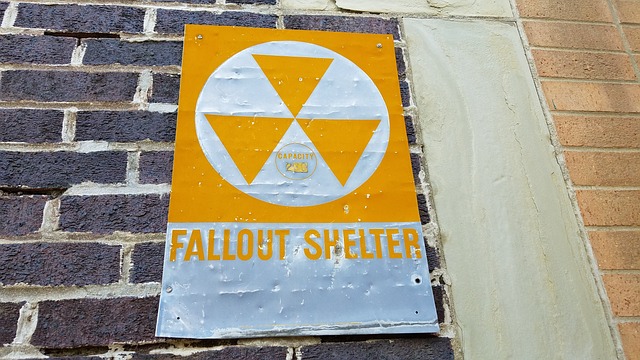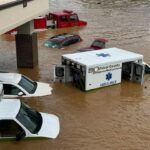
Problem: Nuclear Attack
Scope: Local, Regional
Impact: Major (Depending on severity)
Dangers (not limited to): Personal Injury/Death, Minor Property Damage, Catastrophic Damage/Building Collapse, Utilities Interruption
Preps (not limited to): Plan, Emergency Kit, Faraday Cage, Backup Power Source
As much as we hope it never happens, the possibility of a nuclear attack is a reality that we must be prepared for. The destructive power of nuclear weapons can cause devastating effects that can last for generations. That’s why it’s essential to understand how to prepare for and respond to a nuclear attack. In this article, we’ll discuss some tips for preparing for a nuclear attack and what to do in case of one.
Preparing for a Nuclear Attack:
- Make a Plan: Before anything else, you must have a plan in place for yourself and your family. Determine where to go if a nuclear attack occurs, and practice the plan with everyone in your family. Identify the nearest fallout shelter, and familiarize yourself with its location. In case you’re caught outside when an attack happens, identify places to take shelter, like a sturdy building or an underground location.
- Build a Nuclear Emergency Kit: Your nuclear emergency kit should include essential supplies, such as a first aid kit, food and water supplies, and a battery-powered radio. Additionally, include protective gear like masks, goggles, and gloves to minimize the impact of radioactive fallout.
- Learn about the Emergency Alert System: Be aware of the Emergency Alert System in your area, and make sure that you can receive alerts even during a power outage. The system will provide you with important information about the attack and give you instructions on what to do next.
- Educate Yourself: Learn about nuclear radiation and its effects, so you can understand the risks of exposure and how to mitigate them. Understanding the effects of radiation can help you make informed decisions during a nuclear emergency.
- Stay Informed: Monitor news sources and updates from local emergency management agencies for the latest information. In case of an attack, follow the instructions provided by authorities.
Responding to a Nuclear Attack:
- Get to Safety: If you are inside when an attack happens, get to the nearest shelter immediately. If you are outside, find the nearest sturdy building or underground location, and get inside. Stay inside for at least 24 hours.
- Take Protective Measures: If you are outside and unable to find shelter, take protective measures to minimize exposure to radiation. Cover your nose and mouth with a cloth, and stay away from objects that could conduct radiation, like metal or water.
- Decontamination: Once you’re inside a shelter, decontamination is crucial to minimize exposure to radiation. Remove your clothing and shoes and place them in a plastic bag. Take a shower using soap and water, and do not use conditioner as it can bind radioactive particles to your hair.
- Monitor News and Updates: Stay tuned to news sources and updates from local authorities for information about the situation. Follow their instructions and evacuate the area if instructed to do so.

Nuclear Attack Emergency Preparedness Kit
Having a well-stocked nuclear emergency preparedness kit can help you and your family stay safe during and after a nuclear attack or disaster. Here are some items to consider including in your kit:
- Water: You should have at least one gallon of water per person per day, and it is recommended to have a three-day supply of water on hand.
- Non-perishable food: Pack non-perishable food items like canned goods, granola bars, and other high-energy snacks that will keep you sustained for several days.
- First Aid Kit: Your kit should have bandages, gauze, antiseptic wipes, and any necessary prescription medications for you and your family members. Consider including Iodine to combat radiation.
- Faraday Cage/Bag: Include a Faraday cage to shield your critical electronics from the damage caused by the EMP (Electromagnetic Pulse).
- Radio: A battery-operated or hand-cranked radio can help you stay informed about the situation and any updates on evacuation orders.
- Flashlight: Power outages are common during an emergency, so make sure to have headlamps, flashlights, and extra batteries.
- Personal hygiene items: These include toilet paper, moist towelettes, soap, and hand sanitizer.
- Protective clothing and gear: Include items such as gloves, masks, and protective clothing, like long sleeves and pants, to shield your skin from radioactive fallout.
- Emergency blankets and sleeping bags: These can keep you warm if you need to evacuate to a shelter or stay outside for an extended period.
- Duct tape: Duct tape can be used to seal doors and windows to protect against radioactive fallout.
- Whistle: A whistle can be used to signal for help or to locate family members during an emergency.
- Backup power source: Consider purchasing a gasoline generator, or a Jackery and solar panels to provide backup power during an outage.
It is also important to have an emergency plan in place that includes identifying safe locations, evacuation routes, and a designated meeting place for your family in case you become separated.
Conclusion:
Preparing for and responding to a nuclear attack can be daunting, but taking necessary steps can minimize the impact of such an event. Ensure that you have a plan in place, build an emergency kit, educate yourself about radiation, and stay informed. If a nuclear attack occurs, get to safety, take protective measures, and decontaminate yourself. Stay tuned to news sources and follow instructions from local authorities to keep yourself and your loved ones safe.
It is our mission to educate, equip, and empower everyday ordinary civilians to understand, prepare for, and survive any emergency they face. We cannot rely on the government to take care of us. We must take it upon ourselves to provide for and protect ourselves and our families.
Note: I am an affiliate with Amazon and may receive a commission from products purchased from Amazon. This helps me continue to put out emergency preparedness information for you.








